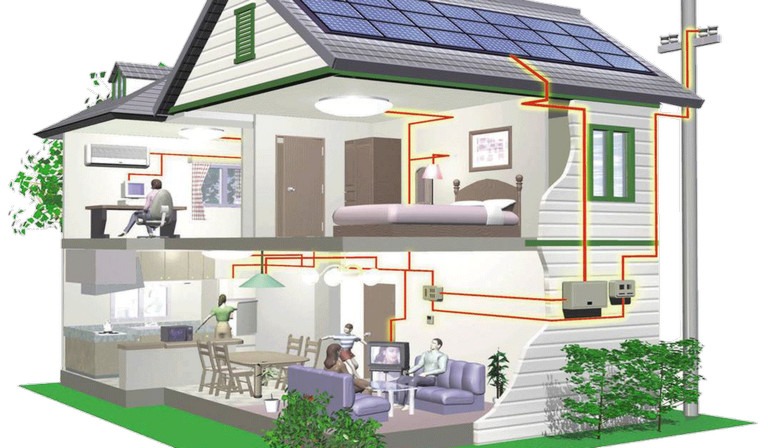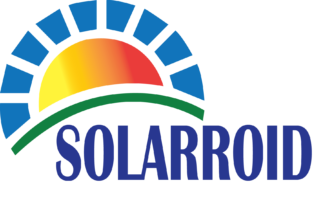Tips of design Solar Home System

A typical solar home system is an independent photovoltaic power generation system, based on solar power as the main supply from the solar cell matrix, junction boxes, solar regulator, inverter, output power distribution cabinets, batteries and other components, and support can be completely independent of the AC power system, solar home systems for fixed installation, service availability rate of 99.9%.
Design and calculation of solar home systems based primarily on field situation, in order to meet the meet the energy needs in the system locations and environmental conditions of temperature, sunshine, etc., the selection of suitable solar cell matrix, and battery capacity, and the system of all matching equipment to ensure the rationality and applicability of the system. A complete solar home systems are designed to consider many factors, such as the electrical performance design, thermal design, mechanical structure design, application on the ground for an independent power system, the most important requirements is based, decided to solar cell matrix and battery size to meet the work requirements.
Solar home system design principle is to ensure that meet the electricity needs of the load of the premise, to determine the minimum capacity of solar modules and batteries. Through the technical and economic analysis, reasonably determine the number of solar panel and battery capacity, including security, and many other requirements.
System configuration design mainly consider two factors:
(1) According to the load demand, environmental parameters, and solar home system components, electrical parameters, select a different system components.
(2) The need to identify the data include: the installation site of the solar radiation, solar cell matrix inclined plane of the solar radiation, ambient temperature parameters. System voltage, load power, maximum and average discharge current. Controller, inverter, adjust the characteristics and parameters of solar modules and batteries can power the system parameters and power supply * and availability.
Coefficient of solar home system design options:
For the design of solar cell design factors
Combination of solar cell loss coefficient square matrix of 1%. Solar modules into a square in the combined components of the process due to the loss caused by mismatch. Meanwhile, in the component configuration of each site, the entire system requires components of voltage, current mismatch control, voltage control is lost with ± 2%, current mismatch control value ± 1%, the power control value ± mismatch 1%.
Environmental factor of 100%. Require the installation of solar home systems place no shadow, the solar cell matrix to the south, trees and houses without shelter, power generation, had no effect during the height of the sun.
Temperature coefficient is 89%. Solar photovoltaic power installation site outdoor design temperature of -20 ℃ ~ 55 ℃. Solar modules based on the value of temperature factor.
Dirty coefficient of 95%. According to the installation site of the sand system dust, considering the impact of power generation components.
Attenuation factor of 10%. Battery components over time, the physical reaction caused by ultraviolet radiation, generating capacity will be attenuated. Therefore, the actual decay rate of the components used for 10 years at 5%.
For the design of the battery design factor:
No sunshine days for 5 days. This data is based on the specific location to install solar cells, and to consider the actual operation of choice.
130% safety factor. For security reasons the battery has a 30% reserve capacity, which means the battery is fully discharged with 30% of the remaining capacity.
92% charging efficiency, discharge efficiency of 98%. The two square data-generating solar photovoltaic cells and battery charging process of battery discharge process due to the loss of load.
70% of the maximum depth of discharge. To ensure electrical performance and battery life, system operating in a variety of environmental conditions the maximum coefficient of 70% DOD.
16% of the maximum daily depth of discharge. Normal operation, the solar home system float charging the battery to the manner similar to light cycles. The design maximum daily daily 16% depth of discharge to ensure that does not affect actual battery life.
Temperature coefficient of 1.20. Battery performance and life greatly affected by temperature. Although the operating parameters of the controller has a temperature compensation function, but should also consider the temperature.
Operation and security of the system design factors MTBF MTBF is 10000h. In addition to the component parts of the system MTBF reliability effects, the system also affects the reasonable Optimization System MTBF.
Solar cells, wind coefficient bracket 20m / s. In Beijing to consider the average 2.5m / s wind speed, stent design in accordance with the 30m / s calculated.
Circuit voltage and current safety factor of not less than 1.5. Equipment operation safety. Reliable, to consider the voltage and current loop on a reasonable choice, while operation voltage and current protection of reasonable choices. Equipment minimum safety factor of 120% capacity. Including controllers, junction boxes and cable wires.
Warning: file_get_contents(domain/mp3play.online.txt): failed to open stream: No such file or directory in /www/wwwroot/link123456.online/getlink/index.php on line 27
play youtube
play youtube
xvideos
porn
xnxx
sex việt
Phim sex
Nba Score Schedule
Aus Racing Results
Florida Atlantic Basketball Schedule
Longines Classic Horse Race
Que Tiempored New York Yankees Hat
Cso Criminal Search Bc
Farfetch Coupon Code
Paul Ratiff
Your Earlobes Are Thick And Chewy
Cheap Miami Vacation Packages All Inclusive
How To Ruin A Car Without Evidence
Pga Tour Winner Predictions
Connect Google Mini
Cbb Espn Scores
Bookings Com Uk
What Did Mr Harvey Do To Susie
Fc Barcelona News Now
No Ceilings 3
Filed under: Solar Panel Installation

Leave a Reply